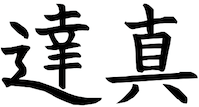In the last post, we parsed a basic meditation technique – following the breath – in terms of its algorithmic components (sequences, branching, looping, and optimizing). But what exactly does optimizing mindfulness mean?
There are many different definitions of mindfulness. The most common one is probably the one used in the Mindfulness-Based Stress Reduction program (MBSR), as defined by Jon Kabat-Zinn:
[Mindfulness is]…paying attention in a particular way: on purpose, in the present moment, and nonjudgmentally. (Wherever you go, there you are, 1995)
Here are two other definitions of mindfulness that I’ve found useful in my practice:
Shinzen claims that any mindfulness technique will improve these three skills – Concentration Power, Sensory Clarity, and Equanimity (CCE for short).

CCE – Unified Mindfulness
As a mindfulness teacher, I know firsthand that people have different motivations for practicing mindfulness and meditation. Some of my students are working with chronic pain; others want to feel more confident and happy as a baseline. There are many reasons why you might want to improve your mindfulness skills – and they’re all valid. Shinzen helpfully fits these motivations into five categories:
I use the phrase ‘Mindfulness – The Path’ for the process of applying mindful awareness to achieve specific aspects of human happiness. I like to classify those aspects under five broad headings. Mindfulness can be used directly to: Reduce physical or emotional suffering; Elevate physical or emotional fulfillment; Achieve deep self knowledge; Make positive changes in objective behavior; Develop a spirit of love and service towards others. (What is Mindfulness?)
And, because he’s Shinzen, he has a Periodic Table of Happiness Elements:

There are many reasons to meditate. And, as this grid leads us to see, meditation is not a panacea. There are other, totally valid strategies for finding happiness in your life, like working with a therapist or life coach, or using other modalities (e.g. exercise).
For the purposes of this series – discussing algorithmic meditation – we will use Shinzen Young’s definition of mindfulness. When we optimize mindfulness, we are optimizing our three attentional skills, concentration power, sensory clarity, and equanimity.

